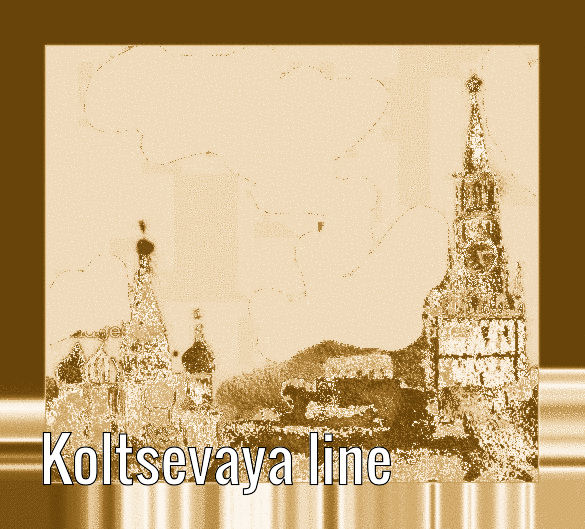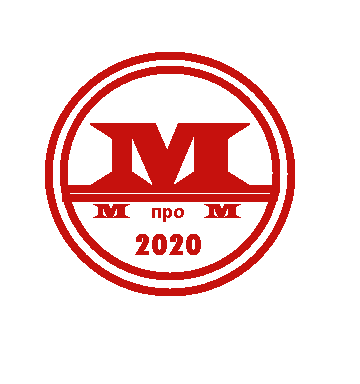
The Koltsevaya line (Russian: Кольцева́я ли́ния, Ring line, IPA: [kəlʲtsɨˈvajə ˈlʲinʲɪjə]) (Line 5) is a line of the Moscow Metro. The line was built in 1950–1954 as a circle route orbiting central Moscow, and became crucial to the transfer patterns of passengers. The stations of the line were built at the height of Stalinist architecture, and include Komsomolskaya, Novoslobodskaya and Kiyevskaya.
In the initial plans of the Metro’s development, there was no provision for the Circle line. Instead it was planned for complete cross-city routes («diameters») to cross the city centre with interchange stations at their intersections. However, after the opening of the second stage in 1938, it was clear from the excessive loads on those junctions, that this plan would be insufficient to deal with the growing number of passengers as the system expanded. An urban legend suggests that Joseph Stalin himself suggested the line when he placed a coffee cup on the original development map (with no ring) and then lifting it and leaving a circular stain around the centre of the city and said «It’s your main fault, it should be built». It is thought this is the reason for the line’s brown colour on all metro maps.
In principle, the alignment of the ring was also debated, whether to use the Garden Ring avenue that encircles the centre or a wider circumference. In the end, it was decided to partially align the southern path along the Sadovoye Koltso, and let the northern part deviate to connect most of Moscow‘s rail terminals. This solved a major logistical problem, because, due to the layout of Russia’s railroads, it would be impossible to travel from a region on one side of Moscow to another without having to make a manual transfer from one terminal to another.
Construction began shortly after the end of the war. The first stage was opened in 1950 from Park Kultury to Kurskaya. In 1952, a second segment completed the northern deviation up to Belorusskaya and in 1954, the circumference was linked.
The construction of the ring allowed for massive changes in the passenger flow patterns around Moscow and allowed a systematic development platform for many future lines. A total of seven radial lines began at the ring, four of which later linked up in the centre to become diameters.
-
Park Kultury
-
Oktyabrskaya
-
Dobryninskaya
-
Paveletskaya
-
Taganskaya
-
Kurskaya
-
Komsomolskaya
-
Prospekt Mira
-
Novoslobodskaya
-
Belorusskaya
-
Krasnopresnenskaya
-
Kiyevskaya


